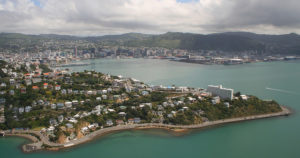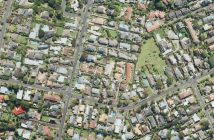An earthquake of the same magnitude that hit Kaikoura in November last year would cost billions if it hit the capital directly, a new report warns
The Forgotten Impact report by international risk management consultancy Deloitte estimates the country would sustain a $29 billion hit if a similar 7.8 magnitude quake occurred directly under Wellington.
Some $26 billion of that charge would be borne by Wellington, the country’s second-l argest city, report author and Deloitte Partner-Corporate Finance Linda Meade believes.
argest city, report author and Deloitte Partner-Corporate Finance Linda Meade believes.
“It goes without saying that a similar size earthquake occurring directly under Wellington city would have a catastrophic impact on Wellington and, as Wellington’s economy is second only to Auckland in size, the country more generally,” she says.
The firm used data from the 22 February 2011 Christchurch earthquake to quantify the shock, which includes impacts such as:
- cost of damage estimates of around 2.5 per cent of the nation’s capital stock
- a 9 per cent reduction in employment in the two years following the earthquake
- the doubling of the overall cost of dwelling insurance.
However, Wellington’s regional GDP is estimated to benefit by $260 million for every 1 per cent reduction in these factors, Meade adds.
“This highlights the importance of improving resiliency in the highly earthquake-vulnerable capital city,” she says.
“Investments today will see a stronger and better-prepared city for the unfortunate occurrence of any larger-scale event in Wellington.”
Wellington has already received a reminder of the danger with the Kaikoura quake, which cost private insurers more than $900 million in business claims according to the Insurance Council of New Zealand.
The Wellington region bore the brunt of business losses with two thirds (65 per cent) of the total, although it’s not clear what proportion of the approximately $600 million relates to building repairs in Wellington.
“However, we do know that to date, 61 Molesworth Street, Defence House, Reading Cinema carpark, and MSC Building have been demolished or are planned to be, and question marks still hang over the fates of a clutch of buildings including Statistics House and BNZ Harbour Quays.”
Fundamentally, Meade says, it’s important that “we invest more systematically in resilience as a country” and that central government work hand-in-glove with local government.
“Investment in resilience cannot be ad hoc and piecemeal,” she insists. “Too often central and local government appear to be pulling in opposite directions rather than jointly for the benefit of New Zealanders.”
Nowhere is this more starkly demonstrated than in Wellington as the capital. “If Wellington were to experience a major event, the impacts on central government would be much more far-reaching than the inability to access computers currently trapped inside Statistics House, or relocation of Defence staff from Thorndon to Trentham for a few weeks.”
Deloitte recommends a combination of regulatory reform, substantially closer working relationships between central and local government, and investment in a range of measures to boost future resilience.
“Utilities, such as Wellington’s port and water facilities are fragile, yet will be hugely important in delivering an emergency response,” Meade notes. “Now is the time to plan and invest in strengthening Wellington’s vital lifelines – land, sea, and air.”




